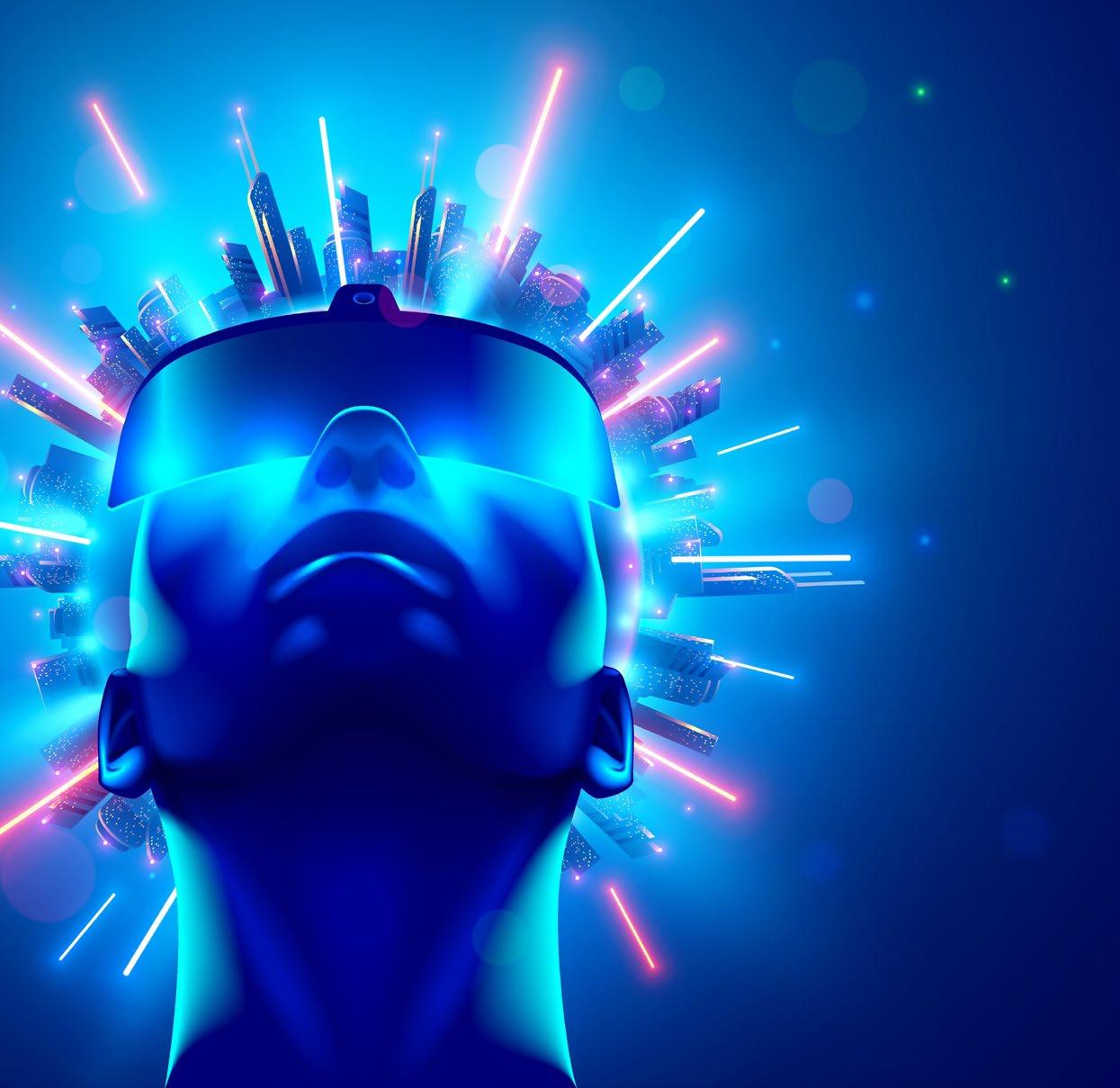
3 minute read
How augmented reality is shaking up e-commerce
Monica Eaton explores how augmented reality is used in the marketplace and what impact it might have on the payments industry.
From a business standpoint, augmented reality (AR) bridges the gap between browsing and buying. It lets shoppers ‘try’ items by interacting with them in a controlled, virtual environment.
This makes for a smoother experience and more informed decisions. It brings a fresh and interactive dimension to marketing strategies.
In short, AR isn’t just a buzzword; it’s shaping up to be a major player in both consumer experience and business revenue streams. How will it be rolled out to the market, though?
And, what ramifications might AR present to the payments space?
The current state of augmented commerce Augmented reality genuinely enhances the shopping experience. Through smartphones or virtual reality (VR) headsets, AR offers a peek into how products could fit into our lives, whether in our homes or on our bodies.
Imagine checking if a sofa matches your living room decor or previewing a makeup shade, all done virtually without leaving your home. Multichannel retailer Argos, for instance, lets buyers use AR to ‘test’ furniture products in a virtual rendering in their living room.
Many businesses are already taking advantage of AR to boost their bottom lines. By 2024, it will be part of the shopping routine for more than 85 million Americans.
On top of that, the revenue from AR advertising alone is expected to reach an impressive US$8 billion (£6.6 billion) by the same year. Sixty-seven percent of ad agencies already use AR to get the word out about products and services.
This isn’t just some passing fad; the AR market is expected to be worth $50 billion next year. Plus, 61% of all shoppers said they’d rather go with retailers who offer AR experiences.
In short: augmented commerce is here to stay, and every brand should have it on their radar.
Six augmented commerce trends to watch for Some pivotal trends we can expect to see more of in the next year include:
1
Advancements in AR hardware
The tech underpinning AR, such as depth-sensing features like LiDAR and ToF, keeps improving. The market reflects this, with predictions indicating that mobile AR revenues will swell to $36.26 billion in 2026.
Big names like Google, Microsoft, and Lenovo are revisiting the ‘smart glasses’ concept, adding another layer to the AR experience.
2
In-store gamification
Augmented reality is helping make shopping fun. Brands like Tesco employ AR to gamify the in-store experience, enhancing customer engagement and loyalty. That’s why 56% of consumers prefer AR to kick off their shopping journeys.
3
The rise of virtual try-ons ‘Virtual try-ons’ are among the most popular retail AR applications, especially for fashion and beauty. This type of technology has seen the most growth between 2017 and 2022.
The technology appeals to a wide demographic, from 57% of the Silent Generation to 92% of Gen Z.
4
Social media as an AR gateway Social platforms like Snapchat and Instagram were among the first to adopt AR for branding, offering filters that users could apply to promote products.
Most smartphone users will regularly engage with AR via social media. A case in point: Christian Dior’s 2021 AR campaign on Snapchat and Instagram garnered over 1.3 million impressions.
5
In-store AR mirrors
Augmented reality-enabled mirrors come in two varieties: some use digital screens behind a regular mirror, while others are like oversized smartphones with a reflective display. There’s interest in the technology, especially in the US, where many consumers are willing to visit stores specifically because they offer this feature.
6
The virtual showroom
The ‘virtual showroom’ concept extends the trybefore-you-buy experience from apparel to home goods. This kind of AR application can significantly increase conversion rates for merchants. The technology is similar to virtual try-ons, widening the scope of its application across different sectors.
How this affects the payments industry
Augmented reality has quickly embedded itself into the fabric of how we shop and engage with brands. Trends like those outlined above underscore both the versatility and the viability of AR in retail.
There are broader effects, as well; for instance, the potential for retailers to reduce refunds and chargeback issuances.
In 2020, 64% of e-commerce customers sought refunds because the product didn’t meet their expectations based on its description. Thirtyseven percent returned items simply because they didn’t like what they received.
Augmented reality has the potential to mitigate these pain points. By offering a more accurate visualisation of products, AR can prevent instances of buyer’s remorse.

The all-too-common justification of ‘this wasn’t what I expected’, which frequently leads to returns and chargebacks, could be a thing of the past.
We’re still in the early days of this transformative retail approach. However, AR’s potential to significantly reduce chargebacks and refunds, while providing a better experience for customers, is hard to write off.
Mitigating customer dissatisfaction through AR is promising, but it’s a story that’s still unfolding.









